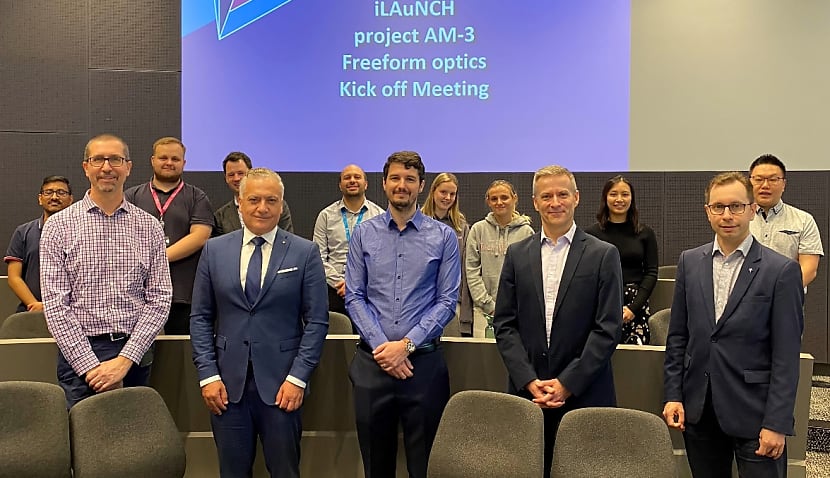Traditional glass optics onboard satellites scan the Earth like a paper scanner – needing to gather light in strips.
However, free-form optics has the potential to create complex lens shapes that can fit in smaller packaging sizes and don’t have to be symmetrical.
The $180-million iLAuNCH Trailblazer is a partnership between academic institutions and more than 20 industry partners to accelerate the development of the space manufacturing sector.
The latest tie-up is a collaboration between the University of South Australia (UniSA) and two specialist manufacturing and engineering firms, SMR Australia and VPG Innovation.
It builds on a project backed in 2021 by a South Australia defence innovation research grant.
This advancement has been made possible due to the emergence of new additive manufacturing (3D printing) technologies.
“Free-form optics, as their name implies, are free from any constraints of symmetry in their form and shape,” said iLAuNCH.
“One of the important requirements in the development of freeform optics is the ability to take the additively manufactured part and process it to the point that a mirror finish can be developed. Traditional surface-finishing processes are unsuitable for free-form surfaces.”
Researchers at UniSA, though, have developed a new approach that they believe solves the problem.
“We are developing an optical grade finish on additive material substrates for optical components for satellites,” said UniSA senior research fellow Dr Kamil Zuber.
“We will also demonstrate a coating system for reflective optical components for space applications.”
iLAuNCH believes the project can expand ISR capabilities for space satellites and satellites in general.
It comes after Space Connect reported last month how another iLAuNCH project would experiment with new software that uses digital simulation to help engineers repair aircraft and spacecraft.
The initiative utilises “virtual twin” technology to recreate the whole life cycle of composites, from manufacture all the way to the point it would need repair.
University of Southern Queensland’s Dr Tristan Shelley, who will head the research, said he hoped the virtual workflows the team would develop could eliminate current laborious processes.
“The program will work on the identification of filament winding pathway developments, particularly for complex components that cannot easily be supported by existing software,” he said.
“The linkage of vision tools in-situ during filament winding into the virtual twin is key to optimised manufacturing processes.”
UniSQ said it is also putting in place scholarships for three PhD opportunities to work alongside engineers and scientists at Boeing and MEMKO in Melbourne, Brisbane, and Toowoomba.

Adam Thorn
Adam is a journalist who has worked for more than 40 prestigious media brands in the UK and Australia. Since 2005, his varied career has included stints as a reporter, copy editor, feature writer and editor for publications as diverse as Fleet Street newspaper The Sunday Times, fashion bible Jones, media and marketing website Mumbrella as well as lifestyle magazines such as GQ, Woman’s Weekly, Men’s Health and Loaded. He joined Momentum Media in early 2020 and currently writes for Australian Aviation and World of Aviation.

